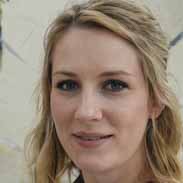Chapter 7 & 8 Test Answers – Flashcards
Unlock all answers in this set
Unlock answersquestion
If you were to suggest one of the most effective ways for teachers to help their students learn new information more effectively, which of the following would be the most effective strategy?
answer
Relate new information to what the students already know.
question
Three days a week, 8-year-old Erica meets with a tutor after school to help her with her reading and writing skills. If you wanted to know how much Erica is benefiting from the tutoring, you would most likely use:
answer
A dynamic assessment instrument
question
It is difficult for children to think about too many things all at the same time—a fact that reflects:
answer
The limited capacity of working memory
question
Alicia, Amy, and Ann are in the same tenth-grade history class; the girls are from different ethnic backgrounds. They are studying together for a test on World War II. The girls share the opinion that racism was a widespread problem during the war, but they disagree about which actions were most racist in nature. Which one of the following explanations of their differences is most consistent with contemporary theories of cognitive development?
answer
Their differing heritages lead them to bring different knowledge bases to their interpretations of history.
question
How do young children's estimates of their memory capacity relate to reality?
answer
They usually overestimate how much they can remember.
question
Mariana teaches in a classroom of students whose parents are diplomats, so the students come to the United States after living and attending school in different countries around the world. One student in particular seems to have difficulty on classroom tests and assignments. The most useful first step for Mariana to take is to:
answer
meet with the student and his or her parents to learn more about the child's past educational experiences.
question
Within the context of Vygotsky's perspective of cognitive development, why do students who are gifted often not benefit from regular classroom instruction?
answer
Because they aren't working within their zone of proximal development
question
Poor nutrition is a problem for many children who live in poverty. Which one of the following situations is likely to be associated with poor nutrition?
answer
Jill appears to have trouble remembering things and does not seem motivated to achieve in school.
question
3. Which one of the following examples best illustrates involvement of a central executive in information processing?
answer
Brigette thinks about how she can best prepare for a history test.
question
The original purpose of intelligence tests is still their main purpose today—that is, to:
answer
Identify children who may require special services or interventions
question
If you are concerned about the reliability of an intelligence test, which one of the following questions would you be most likely to ask?
answer
Does this test rely heavily on language skills?
question
Which one of the following students is most likely to have trouble learning in a noisy classroom?
answer
1st Grader
question
Wendy sees a picture of a beach and then later tries to draw the picture from memory. She draws shells on the beach even though the beach in the picture had no shells. Using the concept of schema, how could we explain Wendy's error?
answer
Wendy's schema of how a typical beach looks includes shells.
question
An information processing perspective of development portrays cognitive development as:
answer
Gradually improving cognitive abilities
question
Which form of problem solving are you likely to see in a one-year-old?
answer
Removing a barrier to get to a desired toy
question
Twin studies show that monozygotic (identical) twins who are raised in separate homes have similar IQ scores. Such evidence:
answer
Suggests that intelligence is partly influenced by heredity
question
Which one of the following items on an intelligence test is most likely to have cultural bias?
answer
Croquet is to mallet as golf is to _______.
question
Which one of the following statements best describes a nativist perspective of child development?
answer
Children are naturally disposed to think about their environment in particular ways; in a sense, some basic knowledge about the world is "pre-wired."
question
After looking up the word rhinoceros in the dictionary, Miguel repeats the letters over and over to himself to help him remember them. Which one of the following strategies does Miguel's behavior illustrate?
answer
rehearsal
question
Lily is ten years old. She gets a score of 97 on an IQ test. What does this tell us about her intellectual ability?
answer
Lily's score is fairly average for her age group.
question
Different theorists conceptualize intelligence differently, but most agree that intelligence:
answer
Involves many different cognitive processes
question
The teacher of a sixth grade class is concerned about the poor academic performance of a 12-year-old student named Nancy. The teacher looks through Nancy's school records and discovers that Nancy got an IQ score of 80 when she took an intelligence test in preschool. Considering the textbook's discussion of IQ scores, the teacher should conclude that:
answer
Nancy's IQ score in preschool is not necessarily a good reflection of her capability in sixth grade.
question
If teachers adopt Gardner's view of intelligence, they would be most likely to conclude that:
answer
Most students are likely to be "intelligent" in one way or another.
question
When 5-year-old Clinton looks at the road map his parents are using to plan a trip, he laughs and exclaims, "That's silly. Our car can't fit on roads that small!" Which one of the following best explains Clinton's statement?
answer
Clinton doesn't yet fully appreciate the symbolic nature of maps.
question
Sam is a very talented dancer; he also shows considerable creativity in art class. He finds math and science classes very difficult, but he loves to read and tell stories to his many friends. Which view of intelligence is best reflected in Sam's abilities?
answer
Gardner's multiple intelligences



